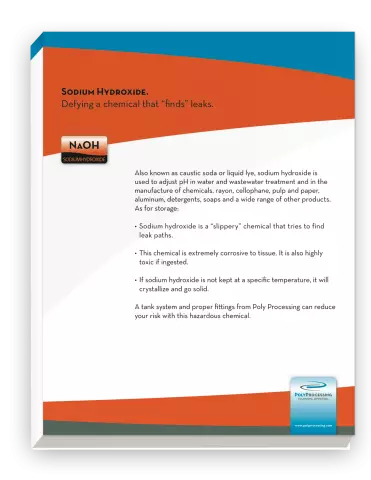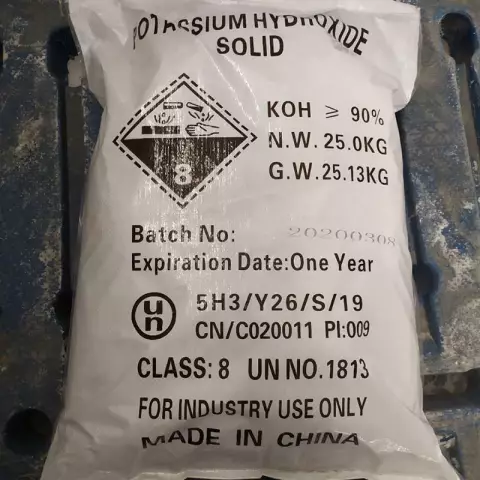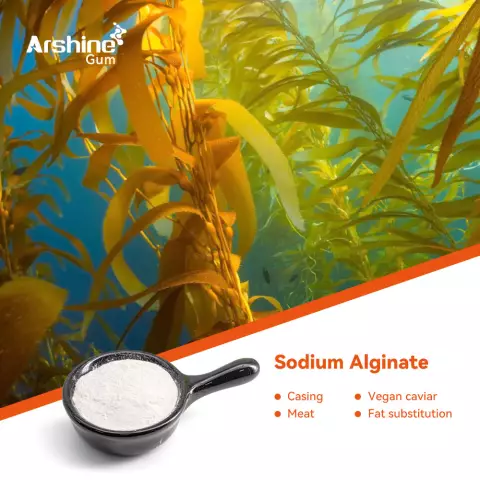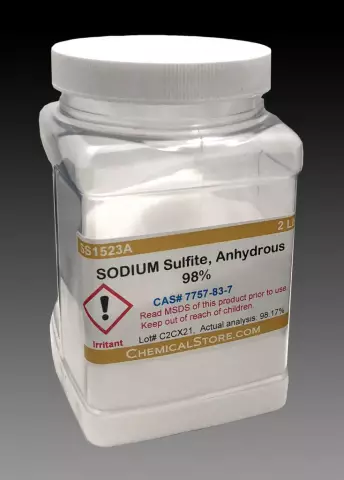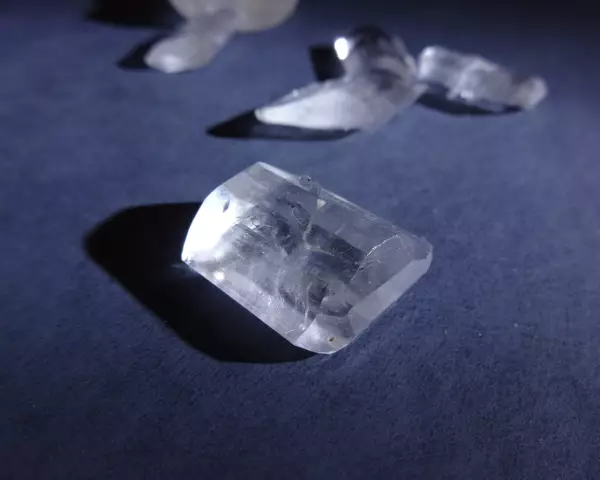- Author Rachel Wainwright [email protected].
- Public 2023-12-15 07:39.
- Last modified 2025-11-02 20:14.
Sodium hydroxide

Sodium hydroxide (food additive E524, caustic soda, sodium hydroxide, caustic soda) is a yellowish or white solid fused mass. According to its chemical properties, sodium hydroxide is a strong alkali.
General properties of sodium hydroxide
Caustic soda is usually available as a clear, colorless solution or as a paste.
Caustic soda dissolves well in water, giving off heat. When interacting with air, this substance spreads, so it goes on sale in a hermetically sealed container. Under natural conditions, sodium hydroxide is part of the brucite mineral. The boiling point of sodium hydroxide is 1390 ° C, the melting point is 322 ° C.
Obtaining sodium hydroxide
In 1787, the physician Nicola Leblanc developed a convenient method for producing sodium hydroxide from sodium chloride. Later, the Leblanc method was superseded by the electrolytic method of obtaining caustic soda. In 1882, a ferritic method for producing sodium hydroxide was developed, based on the use of soda ash.
Currently, sodium hydroxide is most often obtained by electrolysis of saline solutions. The ferritic method for producing caustic soda is now used quite rarely.
Application of sodium hydroxide
Sodium hydroxide is an incredibly popular and widely used chemical compound. About seventy million tons of caustic soda are produced annually.
Caustic soda is used in the pharmaceutical, chemical and food industries, as well as in the cosmetic and textile industries. Caustic soda is used in the manufacture of synthetic phenol, glycerin, organic dyes, and pharmaceuticals. This compound can neutralize components harmful to the human body contained in the air. Therefore, sodium hydroxide solutions are often used for disinfection of premises.

In the food industry, sodium hydroxide is used as an acidity regulator to prevent clumping and caking. Food additive E524 maintains the required consistency of products in the production of margarine, chocolate, ice cream, butter, caramel, jelly, jam.
Before baking, baked goods are treated with caustic soda solution to obtain a dark brown crispy crust. In addition, the food additive E524 is used for the refining of vegetable oil.
The harm of sodium hydroxide
Caustic soda is a toxic substance that destroys the mucous membrane and skin. Sodium hydroxide burns heal very slowly, leaving scars. Eye contact most often leads to loss of vision. If alkali gets on the skin, rinse the affected area with a stream of water. When ingested, caustic soda causes burns to the larynx, mouth, stomach and esophagus.
All work with sodium hydroxide should be carried out with goggles and overalls.
Found a mistake in the text? Select it and press Ctrl + Enter.

